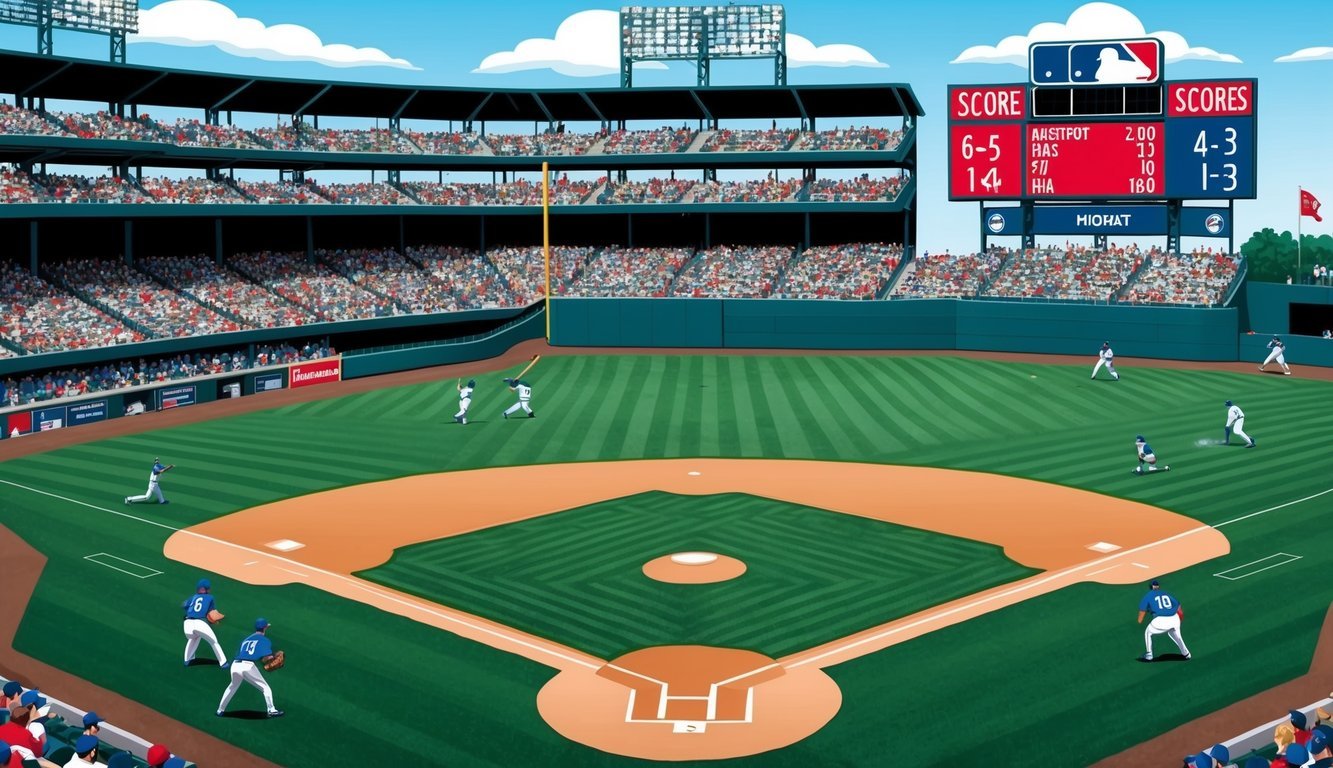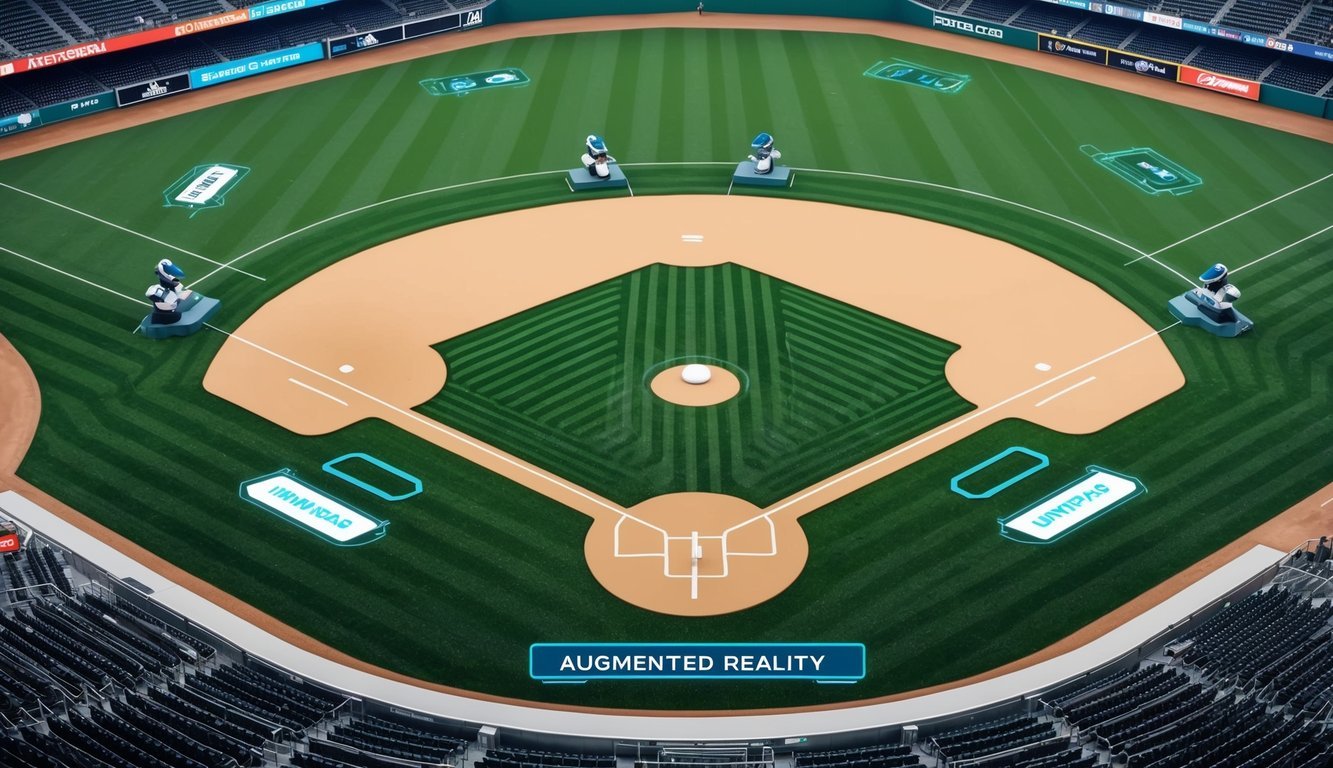Baseball, America’s beloved pastime, has undergone significant changes in recent years.
The 2023 Major League Baseball season introduced several new rules aimed at enhancing the game’s pace and excitement.
These modifications included a pitch timer, larger bases, and restrictions on defensive shifts.
The impact of these rule changes has been substantial, resulting in faster-paced games with more action and less downtime. Games have become crisper, with players adjusting quickly to the new rhythm.
Fans have responded positively to the increased tempo and heightened on-field activity.
As the 2024 season approaches, baseball enthusiasts are eager to see how these changes continue to shape the sport.
The upcoming postseason will provide a fresh perspective on how the new rules affect high-stakes games.
With these adjustments, MLB aims to attract new fans while preserving the essence of the game for longtime supporters.
Evolving Rules and Their Necessity in Modern Baseball
Baseball’s rules have undergone significant changes to keep the game exciting and relevant.
These adjustments aim to enhance the fan experience while preserving the sport’s core elements.
Driving Factors for Change in Baseball
Fan engagement is a key motivator for rule changes.
As attention spans shorten, baseball has adapted to maintain its appeal.
The 2023 season introduced a pitch timer, larger bases, and limits on defensive shifts.
These modifications target a quicker pace of play and increased action on the field.
The pitch timer, for example, reduces downtime between pitches.
Meanwhile, larger bases encourage more stolen base attempts, adding excitement.
TV ratings and stadium attendance also influence rule adjustments.
MLB constantly seeks ways to make games more dynamic and entertaining for viewers and spectators alike.
Historical Context of Rule Changes
Baseball’s rules have evolved since its inception in the 19th century.
Early changes focused on standardizing gameplay across different leagues and regions.
In 1877, the National League established its first set of uniform rules.
This marked a crucial step in professionalizing the sport and creating consistency.
Over time, rules adapted to address emerging issues and improve the game.
The introduction of the designated hitter in the American League in 1973 exemplifies a major shift in strategy and lineup construction.
Recent changes continue this tradition of adaptation.
The 2023 rule updates represent some of the most significant alterations in the modern era, showcasing baseball’s ongoing commitment to innovation and improvement.
Specific Rule Changes and Effects
Major League Baseball implemented several significant rule changes in 2023 to enhance game pace and increase on-field action.
These modifications had a notable impact on various aspects of play.
Pitch Clock Implementation and Its Impact on Game Pace
The introduction of a pitch clock dramatically altered the rhythm of baseball games.
Pitchers now have 15 seconds to begin their motion with bases empty and 20 seconds with runners on base.
This change led to a substantial reduction in average game time.
Games in 2023 clocked in at around 2 hours and 40 minutes, nearly 30 minutes shorter than the previous season.
Pitchers adapted quickly, with violations becoming less frequent as the season progressed.
The faster pace kept fans more engaged and created a livelier atmosphere at ballparks.
Some pitchers reported feeling more pressure, while others embraced the quicker tempo.
Infield Shift Regulations and Hitter Performance
New rules required two infielders on each side of second base when the pitch is released.
This change aimed to increase batting averages and promote more traditional defensive alignments.
The impact on hitters was noticeable.
Pull-heavy left-handed batters saw improved results on ground balls to the right side.
Meanwhile, batting averages for some players increased, though not as dramatically as some had predicted.
Defensively, teams got creative with positioning within the new constraints.
Some utilized “mini-shifts” to maintain strategic advantages while adhering to the rules.
Modifications to Bases and Impact on Stolen Bases
MLB increased the size of bases from 15 to 18 inches square.
This change, coupled with limits on pickoff attempts, aimed to encourage more stolen base attempts and success rates.
The strategy paid off, with stolen base attempts rising significantly.
Success rates also improved, making the running game a more prominent feature of many teams’ offensive strategies.
Larger bases also slightly reduced the distance between bases, contributing to more infield hits and exciting plays.
Base-stealers praised the change, noting improved footing and reduced collision risks.
Player and Team Strategy Adaptations

Baseball teams and players have quickly adjusted their approaches to maximize advantages under the new rules.
These changes have led to innovative tactics and a renewed focus on specific skills.
Tactics In Response to Pitch Clock
The pitch timer has forced pitchers to work faster and be more efficient.
Many have simplified their pre-pitch routines, cutting out unnecessary movements.
Some pitchers now use quick pitches to catch batters off guard.
Batters have also adapted to the faster pace.
They’re staying in the box longer and calling fewer timeouts.
Some hitters practice their timing between pitches to stay sharp.
Managers are also making quicker decisions about pitching changes.
They’re more likely to have relievers warming up earlier in games.
Adjustments to Offensive and Defensive Plays
Shift restrictions have brought infielders back to more traditional positions.
This has led to a resurgence in pull hitting and ground ball strategies.
Some teams are placing a greater emphasis on spray hitting to take advantage of gaps.
Outfielders are playing deeper to compensate for the lack of infield shifts.
This has created more opportunities for short hits and bloop singles.
Base runners are being more aggressive, knowing infielders have more ground to cover.
Teams are putting a premium on athleticism and range for their infielders.
Strategies Around Utilizing Larger Bases
Larger bases have sparked an increase in stolen base attempts.
Teams are prioritizing speed and baserunning skills in their lineups.
Many clubs are investing more time in baserunning drills during practice.
Pitchers are working on quicker deliveries to home plate to counter the stolen base threat.
Meanwhile, catchers are focusing on improving their pop times and accuracy on throws to second base.
Some teams are experimenting with hit-and-run plays more often.
The extra inch on each base has made it slightly easier for runners to be safe on close plays.
Implications for the Sport and Fan Experience

The rule changes in baseball have reshaped the game’s dynamics and significantly impacted viewer engagement.
These modifications have also influenced the sports industry and team revenues, creating a ripple effect throughout the baseball ecosystem.
Changes in Game Dynamics and Viewer Engagement
The new rules have injected more action into baseball games.
With the pitch timer in place, games move at a brisker pace, reducing downtime between plays.
This faster tempo has led to increased viewer engagement, as fans find the games more exciting and less drawn out.
The defensive shift limits have resulted in more hits and runs scored per game.
This boost in offensive production has created a more compelling product on the field, appealing to both casual and die-hard fans alike.
Bigger bases have encouraged more stolen base attempts, adding an element of excitement and strategy to the game.
This increase in baserunning action keeps viewers on the edge of their seats.
Impact on Sports Industry and Team Revenues
The rule changes have had a positive effect on baseball’s popularity and financial health.
TV ratings have seen an uptick, with more viewers tuning in to watch the faster-paced games.
This increased viewership has translated into higher advertising revenues for broadcasters.
Average attendance at ballparks has also risen, as fans are drawn to the more dynamic on-field product.
This boost in ticket sales has directly benefited team revenues and local economies surrounding the stadiums.
The renewed interest in baseball has led to increased merchandise sales and sponsorship opportunities.
Teams and the league as a whole have capitalized on this momentum to create new revenue streams and partnerships.
Future of Baseball: Insights and Predictions

Baseball continues to evolve, with rule changes and shifting attitudes shaping its future.
Experts and fans alike are weighing in on what lies ahead for America’s pastime.
Experts’ Take on the Evolution of Rules
MLB executives and analysts foresee more tweaks to enhance game pace and excitement.
Rob Manfred hints at potential adjustments to the pitch clock, aiming to further reduce game times.
Meanwhile, Theo Epstein, now advising the league, advocates for a six-inning minimum for starting pitchers to combat the trend of shorter outings.
Some experts predict expanded use of technology in umpiring decisions.
This could include automated strike zones and more extensive replay reviews.
There’s also buzz about limiting defensive shifts further to boost offense.
Postseason format changes are under consideration.
Ideas include shortening early rounds or reseeding teams after each round to create more compelling matchups.
Fan and Player Perspectives on Baseball’s Direction
On social media, fans express mixed feelings about recent changes.
Many appreciate faster-paced games, while others worry about losing traditional aspects of baseball.
Younger fans tend to favor innovations that add excitement and unpredictability.
Players are also adapting to new rules.
Some are embracing the changes, while others are voicing concerns.
Pitchers, in particular, have mixed reactions to the pitch clock.
Some enjoy the quicker pace, while others feel rushed.
Surveys show growing interest in more player-fan interaction.
This could lead to expanded mic’d up segments during games or increased social media engagement between players and supporters.
